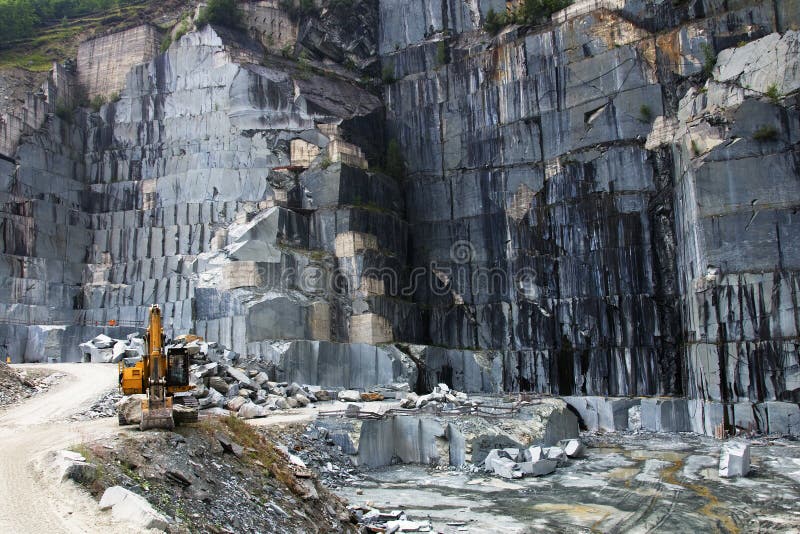Discovering the Rich Background and Sustainable Practices of Granite Quarrying
As we stand on the precipice of discovering the elaborate tapestry of granite quarrying, a journey via time discloses not simply the physical act of removing rock but also the social and historical value woven into the really material of this technique. From the old origins that laid the structure for contemporary quarrying strategies to the lasting practices that are forming the future of this sector, each sculpt mark on granite surfaces narrates waiting to be uncovered (granite quarries in south africa). The heritage of granite quarrying stretches much past simple extraction; it is a testament to human ingenuity, strength, and the enduring allure of this impressive stone
Old Origins of Granite Quarrying
Going back to ancient human beings, the technique of quarrying granite has been an integral part of human background and architectural advancement. The earliest evidence of granite quarrying go back to ancient Egypt, where large pyramids and intricate sculptures were crafted from this long lasting rock. The Egyptians utilized primitive devices to remove granite blocks from quarries, showcasing the value of this material in their significant constructions.
Moving on in background, the Greeks also made substantial contributions to the quarrying of granite. The Greeks made use of granite in different building wonders, such as temples and statues, showing their skill in shaping and carving this sturdy rock. The Romans better improved the techniques of quarrying granite, using advanced devices like blades and hammers to extract and form granite for their iconic frameworks.
Through the centuries, the practice of quarrying granite has actually advanced, with contemporary technologies boosting efficiency while maintaining the ageless allure of this all-natural stone - granite quarries in south africa. From old human beings to modern home builders, the tradition of granite quarrying proceeds to shape our world
Advancement of Quarrying Methods
The development of quarrying strategies has actually been marked by a continuous progression towards higher performance and precision in removing granite. From the primary methods used by our ancestors to the innovative technologies used in modern-day quarrying procedures, the sector has actually gone through substantial developments. Early quarrying strategies included manual work with basic tools such as blades, hammers, and wedges to remove granite blocks from the earth. As people advanced, techniques like fire-setting and primitive dynamites were presented to help with the removal procedure.
Advancements in computer-controlled equipment and 3D modeling have actually maximized quarrying operations, leading to minimal ecological influence and improved sustainability practices. As the need for granite continues to increase, the advancement of quarrying methods stays important to meeting market needs successfully and sustainably.
Social Value of Granite
Granite holds an extensive social importance across various find out here now people due to its enduring visibility in building work of arts and admired monoliths. The social significance of granite prolongs beyond its physical characteristics; it embodies durability, stability, and timelessness, making it an icon of enduring heritages and practices.

Sustainable Practices in Quarrying
In the middle of the rich background of granite quarrying and its social importance exists a growing emphasis on sustainable practices within the industry. As ecological recognition and concerns concerning source exhaustion have actually increased around the world, the quarrying sector has significantly accepted sustainable methods to decrease its effect on the setting and surrounding areas.

In addition, improvement and rehab of quarry sites post-extraction are integral to sustainable practices. By recovering quarried areas to a natural or valuable state, such as creating wildlife environments or leisure areas, quarriers can offset the ecological footprint of their procedures and contribute favorably to the local community.
Tradition of Granite Quarrying
With a historical background steeped in workmanship and industrial development, what withstanding influence has granite quarrying left on the landscape of modern society? The heritage of granite quarrying transcends plain extraction techniques; it has shaped architectural marvels, urban landscapes, and cultural heritage worldwide. The sturdy nature of granite has actually made it a preferred option for monoliths, buildings, and framework, standing as a testimony to the ability and creativity of quarry employees across generations.
Additionally, the economic impact of granite check out here quarrying can not be ignored. The industry proceeds to supply work chances and drive local economic climates in regions where granite extraction is common. It has likewise stimulated technical advancements in quarrying methods and devices, resulting in extra efficient and lasting methods.
In terms of sustainability, the legacy of granite quarrying consists of efforts to reduce environmental impacts through reclamation tasks and liable resource management. By stabilizing economic interests with ecological stewardship, the market aims to make sure that future generations can proceed to gain from this enduring natural deposit.
Conclusion
